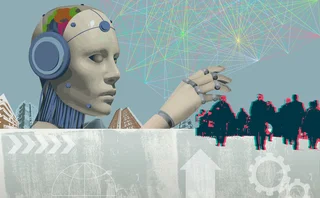April 2012: Are We Out of the Woods Yet?

It’s been a while since any economic indicators have given anyone reason for optimism … a long while. But recently, the pallor that has characterized the face of the global economy since the financial crisis of 2008 looks like it might just be replaced by something resembling a bit of color. The world’s two largest consumer-based economic regions—North America and Western Europe—appear to have stopped the economic rot by arresting the rise in unemployment numbers, while their service-based industries, manufacturing sectors, and consumer spending have started to show the first green shoots of revival.
These positive numbers—prompting speculation from the industry’s more sanguine commentators that we’re finally on our way out of the woods—were touched on by Christine Lagarde, managing director of the International Monetary Fund, during a recent visit to India. On March 20, Australia’s NineMSN news website reported that during her two-day trip to New Delhi to attend a conference and meet the country’s economic leaders, Lagarde described the global economy as having retreated from the “abyss,” even though there were still serious weaknesses. “We are further away from the abyss than we were three months ago,” Lagarde said, adding that the European Central Bank and certain European countries had helped stabilize the overall situation, but there were still areas that need to be “attacked with vigor,” such as shoring up financial institutions. “Financial institutions were high contagion agents for this crisis—this tells us where reforms have to focus. Financial institutions have to be agents for growth, not a threat to growth,” she said.
So what does all this economic euphoria have to do with financial technology? It’s at times like these that CIOs are afforded the rare opportunity to contemplate committing capital to areas of spending other than simply keeping the lights on. And, as Jake Thomases’ feature on page 12 explains, reducing one’s carbon footprint by consuming less energy is not only socially responsible—it’s also economically astute. One of State Street’s green IT initiatives has, for example, saved the firm 12,300 metric tons of carbon dioxide equivalent (CDE) and over $2 million in energy bills since its 2010 launch. While $2 million and 12,300 metric tons of CDE is hardly going to reverse global warming, save gaggles of polar bears, and appreciably inflate investors’ dividends, it is a start. If large numbers of buy-side and sell-side firms followed suit, it might just amount to something significant, and, for a while at least, win the industry some friends among the wider population, a rare commodity indeed since the debacle of 2008.
Only users who have a paid subscription or are part of a corporate subscription are able to print or copy content.
To access these options, along with all other subscription benefits, please contact info@waterstechnology.com or view our subscription options here: http://subscriptions.waterstechnology.com/subscribe
You are currently unable to print this content. Please contact info@waterstechnology.com to find out more.
You are currently unable to copy this content. Please contact info@waterstechnology.com to find out more.
Copyright Infopro Digital Limited. All rights reserved.
As outlined in our terms and conditions, https://www.infopro-digital.com/terms-and-conditions/subscriptions/ (point 2.4), printing is limited to a single copy.
If you would like to purchase additional rights please email info@waterstechnology.com
Copyright Infopro Digital Limited. All rights reserved.
You may share this content using our article tools. As outlined in our terms and conditions, https://www.infopro-digital.com/terms-and-conditions/subscriptions/ (clause 2.4), an Authorised User may only make one copy of the materials for their own personal use. You must also comply with the restrictions in clause 2.5.
If you would like to purchase additional rights please email info@waterstechnology.com
More on Emerging Technologies
Waters Wavelength Ep. 307: The shrinking OMS landscape
This week, Tony and Nyela discuss FactSet’s recent acquisition of LiquidityBook and what it could signal for trading technology.
Banks urged to track vendor AI use, before it’s too late
Veteran third-party risk manager says contract terms and exit plans are crucial safeguards.
Market data woes, new and improved partnerships, acquisitions, and more
The Waters Cooler: BNY and OpenAI hold hands, FactSet partners with Interop.io, and trading technology gets more complicated in this week’s news round-up.
Waters Wavelength Ep. 306: Reykjavik and market data
Reb is back on the podcast to talk about her trip to Reykjavik, as well as two market data reports released this month.
BlackRock tests ‘quantum cognition’ AI for high-yield bond picks
The proof of concept uses the Qognitive machine learning model to find liquid substitutes for hard-to-trade securities.
JP Morgan, Eurex push for DLT-driven collateral management
The high-stakes project could be a litmus test for the use of blockchain technology in the capital markets.
For AI’s magic hammer, every problem becomes a nail
A survey by Risk.net finds that banks are embracing a twin-track approach to AI in the front office: productivity tools today; transformation tomorrow.
On GenAI, Citi moves from firm-wide ban to internal roll-out
The bank adopted three specific inward-facing use cases with a unified framework behind them.







